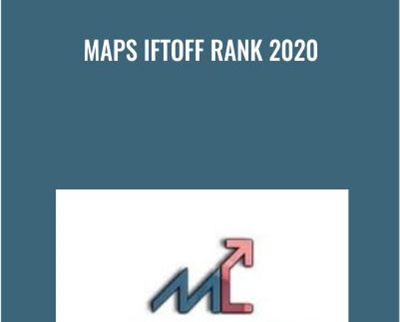Purchase The Science of Reconnection – Doug DeVito at BoxSkill, You can get access to all files. Direct Download Link and No costs are incurred (No Ads, No Waiting Time, No Capcha).
Not to interrupt your learning, you should download the course after getting the link.
“Last year, when I was working the phones, a woman called, trying to return some boots. The sad story turned out to be that she had bought them for her father, who had since died. I told her not to bother returning them; that we would refund her money and she was free to give the boots away instead of returning them. And after the call I felt moved to send her some flowers — just one of the 380 gifts of flowers you can see on the board that we sent out last year. Sometime after that, she sent me a letter and a photo of her father.”
This story was told by a Zappos employee and quoted in a June 2017 Forbes article, “Tony Hsieh Reveals the Secret to Zappos’ Customer Service Success in One Word.” But its lesson isn’t about flowers. It’s about the phone.
Zappos encourages phone calls 24/7. It enables in-depth conversations with customers. This creates social connection to build lifelong customers. “It’s how we build a personal connection, primarily on the phone,” Tony Hsieh, Zappos CEO, said in the Forbes article. And the conversations customers have with Zappos phone workers aren’t just about products. They are about “whatever friends would talk about,” according to Hsieh.
Can we be sure that what Zappos does actually helps form deeper connections with customers? Fortunately, we can now — using neuroscience. For years, “soft” sciences such as psychology have assessed human relationship behavior. Now, new technology enables “hard” science to provide more evidence into how our brains work. And we can leverage that insight to build trusted business relationships, both internally and externally.
The Relationships Business
Soft skills, such as communication and negotiation, form the core of relationship building in business and can help develop deep and trusted relationships with clients, engaging on a human level.
Last year at KPMG, we endeavored to discover whether we could leverage evidence-based research from neuroscience to better inform how best to develop trusted relationships with our clients. Granted, that goal may be achieved differently by different individuals. Yet we wondered if hard science might uncover any universal insights to better inform our practice. If so, we could then use such findings to update our client-engagement methodology in coaching our people working with clients. What we ended up doing was a bit different.
We partnered with renowned neuroscience professor Michael Platt, who leads the Wharton Neuroscience Initiative at the University of Pennsylvania. Platt is an expert who has spoken at the World Economic Forum and NATO and has worked with numerous industries to apply his lab’s neuroscience research to practical needs.
With Platt’s help, we looked to determine the strength of our client relationships and those within KPMG and what we could do to improve them. One result that came out of the partnership was an instructional program on applying practical insights from neuroscience to build trusted relationships.
Initiating a Relationship
Recent studies of human brain imaging strongly suggest that our brains are wired to be social. To build good relationships, we need to understand how to tap into that “social brain” network to maximize connectivity between two individuals. How do you do that? Interestingly, it’s not by remembering everything told to you or by taking thorough notes. The key to initiating a strong relationship is perception.
Because the brain is wired to be social, it seeks social cues — the real-time behaviors that display connection. When you make eye contact with a new acquaintance, smile at them and pay close attention to them, their social brain registers along with yours. Failing to look and listen reduces that information flow into the social brain, limiting the potential for building connections, establishing trust and working together.
Initiating a relationship well is the critical first step in building a collaborative dynamic between individuals. Paying close attention — and thus tapping into the social brain — improves your ability to do that.
Engaging Emotionally
Once you’ve established the connection, your next order of business is, strangely enough, not to do business.
After the initial greeting and connection, refrain from immediately discussing your meeting’s business objective. Instead, a growing body of scientific literature indicates that you need to first promote “shared feelings.” This emotional connection is why many cultures build in time for individuals to get to know one another socially before talking business. Even in more results-oriented Western cultures, it’s customary to precede the official business meeting agenda with social small talk: sharing a conversation about the weather or the local sports team. This seemingly unimportant behavior is tied to the activity in the social brain circuit. During successful communication, the speaker’s and listener’s brains exhibit temporarily coupled response patterns, or brain synchrony.
These shared feelings create similar processing in the brains of those participating. As this occurs, the activity in the brain circuits of the two individuals becomes synchronized. As the corresponding circuit activity of the two brains begins to match, it allows information flow to become more effective than if the two circuits were not so coordinated.
Even more important, brain synchrony also leads to physiological synchrony, as shown by brain imaging and heart rate studies. When brain circuits match, so too do heart electrocardiogram rates. Common heart activity has consistently been found to improve trust and liking between individuals, creating a higher likelihood of successful relationship outcomes.
This coordination of brain and heart between individuals can be sparked by common auditory and visual connections. For example, physical mirroring increases emotional engagement. When two people’s postures are in sync, it sends signals to both their brains that create a sense of shared feelings. That said, mirroring must appear to be natural and not obviously manipulated.
Such techniques, whether visual, auditory or both, help create the emotional connection that produces brain synchrony. This in turn also activates synchronized physiology, resulting in increased mutual liking, understanding, empathy, rapport, helping and a more successful working relationship.
Engaging Cognitively
A trusted relationship also depends on cognitive connections. These connections happen when people say, “We’re on the same page,” or “I feel we have shared goals.” This feeling of a common objective activates the social brain, amplifying trust and understanding between individuals.
How can you achieve that? By thinking and acting more “pro-socially” — in other words, trying to understand the goals and motivations of the other person. It’s a skill that can be learned.
One way to exhibit cognitive connections is through perspective-taking. When communicating with another person, aim to “walk a mile in their shoes” and see things from their vantage point. Activating perspective-taking engages the social brain, which enhances your ability to develop understanding and helps to achieve common goals.
Highlighting Similarities, Reducing Differences
Relationships flourish when we focus on commonalities. The typical business commonality that drives collaboration and cooperation is the shared goal of the team or firm. Common commitment to a team’s shared work goal activates the social brain, which improves motivation to perform well together and helps drive collaboration.
A clear, common goal that everyone on the team understands and supports is key to a successful outcome. You probably already know that. What you may not know is that even small perceived differences can reduce activation within the brain’s social network. This is associated with reduced attention to others and, ultimately, reduced empathy and understanding for those with whom you interact.
What might these “perceived differences” be? They could be something as basic as differences in age, gender, ethnicity, or even socioeconomic or social status. Any perceived difference between individuals will lessen social brain activation — sometimes enormously.
One powerful way to rescue empathy and mutual understanding is to highlight the perception that our similarities far outweigh our differences. In other words, we are on the “same team.”
You see this at sporting events, where people of different ages and ethnicities come together to root for the same team. For those few hours together, individuals with different backgrounds and even those who speak different languages share a common feeling of oneness about their team. This lessens the focus on differences and increases the focus on commonality and mutual connection.
To build relationships, highlight similarities and minimize perception of differences by identifying mutual interests. This may include sharing common music, film or reading interests, discussing similar educational backgrounds or sharing favorite travel experiences. Doing so helps build empathy, engagement and greater collaboration.
Flexing Your Relationship Muscle
Our relationship-building ability is like a muscle. We improve our social fitness the same way we do our physical fitness: The more we use it, the better it gets.
Consider monkeys, for example, which have the same social brain networks that humans do. Among the things we have learned by studying monkeys and other primates are the actions we can take to better develop our own capacity to connect with each other.
In a recent set of experiments, scientists scanned the brains of naive monkeys to measure their baseline social-brain-network health. These monkeys — which had limited prior social interaction — were each placed into different-sized groups. One monkey was placed in a living environment with one other monkey. Another was placed in an environment with two other monkeys. One was placed with eight other monkeys, one with 20, one with 32, and so on. After these monkeys lived in their respective environments for several months, the scientists rescanned the original monkeys’ brains.
The scientists discovered that the social-brain networks of the monkeys in the larger-sized groups had grown significantly larger than those who lived in the smaller groups. Therefore, they concluded that having to connect and negotiate an environment with many other monkeys caused greater development of “social brain muscle.”
What does that mean for us? It means that when we engage our social brain — by connecting beyond family, fellow employees and our normal network of friends — it gets stronger.
Consider getting out of the house this weekend and making some new connections, perhaps at your local farmers market or a neighborhood gathering. These activities grow your social muscle, which can help you build better relationships with clients and colleagues. And better relationships grow trust, inspire rapport and lead to greater business outcomes.
Isn’t This Obvious?
It probably seems obvious; of course being more social helps build relationships. Although you already likely know this from anecdotal or personal experience, recent neuroscience findings not only help confirm such intuitive insights but also detail how the mechanism of our brain’s social network informs the initiation and development of human relationships.
The next time you’re about to begin a business meeting or conversation, consider starting with how that local sports team of yours is doing or the unusual weather you’re experiencing or “whatever it is that friends talk about,” as Hsieh noted. By doing so, you may discover you’re improving your opportunity to create a more trusted and lasting relationship.
Nabeel Ahmad is head of L&D for market development and industries at KPMG. He can be reached at [email protected].
Get The Science of Reconnection – Doug DeVito, Only Price 29.90$
Tag: The Science of Reconnection – Doug DeVito Review. The Science of Reconnection – Doug DeVito download. The Science of Reconnection – Doug DeVito discount.
Buy the The Science of Reconnection – Doug DeVito course at the best price at Boxkill. After your purchase, you will get access to the downloads page. You can download all the files associated in your order at here and we will also send a download notification email via your mail.
Unlock your full potential with The Science of Reconnection – Doug DeVito courses. our courses are designed to help you excel.
Why wait? Take the first step towards greatness by purchasing The Science of Reconnection – Doug DeVito courses today. We offer a seamless and secure purchasing experience, ensuring your peace of mind. With our trusted payment gateways, Stripe and PayPal, you can confidently complete your transaction knowing that your financial information is protected.
Stripe, known for its robust security measures, provides a safe and reliable payment process. With its encrypted technology, your sensitive data remains confidential throughout the transaction. Rest assured that your purchase is protected.
PayPal, a globally recognized payment platform, offers an additional layer of security. With its buyer protection program, you can feel confident in your purchase. PayPal ensures that your financial details are safeguarded, allowing you to focus on your learning journey.
Is it secure? to Use of?
- Your identity is completely confidential. We do not share your information with anyone. So it is absolutely safe to buy the The Science of Reconnection – Doug DeVito course.
- 100% Safe Checkout Privateness coverage
- Communication and encryption of sensitive knowledge
- All card numbers are encrypted using AES at relaxation-256 and transmitting card numbers runs in a separate internet hosting atmosphere, and doesn’t share or save any data.
How can this course be delivered?
- After your successful payment this “The Science of Reconnection – Doug DeVito course”, Most of the products will come to you immediately. But for some products were posted for offer. Please wait for our response, it might take a few hours due to the time zone difference.
- If this happens, please wait. The technical department will process the link shortly after. You will receive notifications directly by e-mail. We appreciate your wait.
What Shipping Methods Are Available?
- You will receive a download link in the invoice or YOUR ACCOUNT.
- The course link always exists. use your account to login and download the The Science of Reconnection – Doug DeVito course whenever you need.
- You only need to visit a single link, and you can get all the The Science of Reconnection – Doug DeVito course content at once.
- You can do your learning online. You can be downloaded for better results and can study anywhere on any device. Make sure your system does not sleep during the download.
How Do I Track Order?
- We always notice the status of your order immediately after your payment. After 7 days if there is no download link, the system will automatically complete your money.
- We love to hear from you. Please don’t hesitate to email us with any comments, questions and suggestions.
You must be logged in to post a review.











Reviews
There are no reviews yet.